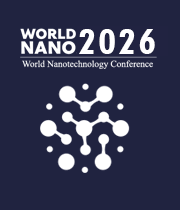Biochemical Assemblies
Nanotechnology is a rapidly evolving field of research and development that has the potential to revolutionize many aspects of modern life. One area of particular interest is the use of nanoscale biochemical assemblies, which are structures composed of molecules that are organized in a specific way to create a system that can perform complex tasks. These systems can be used in a variety of applications, from drug delivery to materials production. The first step in the development of a nanoscale biochemical assembly is the construction of a scaffold. This structure serves as a frame for the assembly and is usually composed of a polymer, such as polyethylene glycol (PEG). The scaffold provides a platform for the attachment of other molecules, such as enzymes, proteins, and nucleic acids, which will form the active components of the assembly. Once the scaffold has been constructed, the molecules can then be attached to the structure in a specific manner to create a functional system. This process is often referred to as “directed assembly”. For example, enzymes can be attached to a scaffold in a way that optimizes their performance when exposed to a particular substrate. Similarly, proteins can be attached to a scaffold in a way that increases their binding affinity for specific molecules. Nanoscale biochemical assemblies have the potential to revolutionize many aspects of science and engineering. By controlling the structure and function of these systems, it is possible to create nanoscale devices that can be used for drug delivery, materials production, and even as biosensors. These systems are also being explored as a means of manipulating cells and tissues, providing researchers with unprecedented control over the behavior of living systems.

Harry Ruda
University of Toronto, Canada
Raman Singh
Monash University, Australia
Paulo Cesar De Morais
Catholic University of Brasilia, Brazil
Xiao Hong Nancy Xu
Old Dominion University, United States
S V A R Sastry
Harcourt Butler Technical University, India
Vinayak Adimule
Angadi Institute of Technology and Management, India



Title : Nanomaterial-based bio-lubricant additives for improved efficiency and environmental sustainability in automotive applications
S V A R Sastry, Harcourt Butler Technical University, India
Title : Harnessing the unique properties of engineered nanostructures for sensing
Harry Ruda, University of Toronto, Canada
Title : Circumventing challenges in developing CVD graphene on steels for extraordinary and durable corrosion resistance
Raman Singh, Monash University, Australia
Title : 40,000 implants in humans and no failure: The impact of nanomedicine
Thomas J Webster, Hebei University of Technology, China
Title : Evaluating cytotoxicity of metal-doped tin oxide nanoparticles
Paulo Cesar De Morais, Catholic University of Brasilia, Brazil
Title : Lipid nanoparticles formulations: From bench scale to industrial scale
Mohammad A Obeid, RAK Medical and Health Sciences University, United Arab Emirates